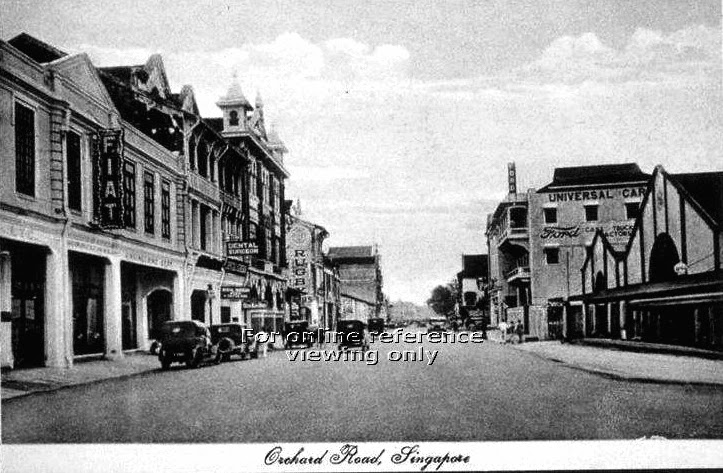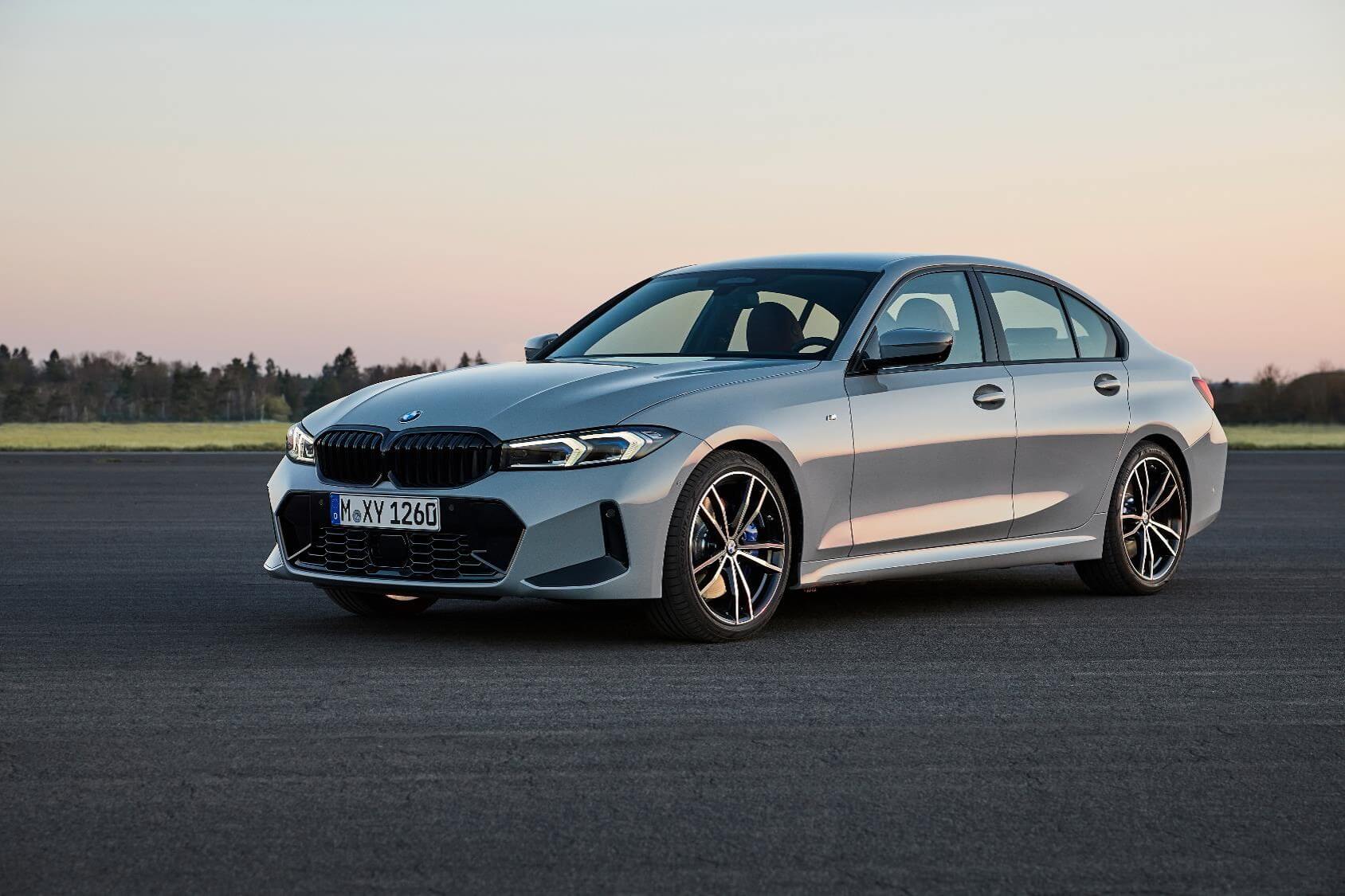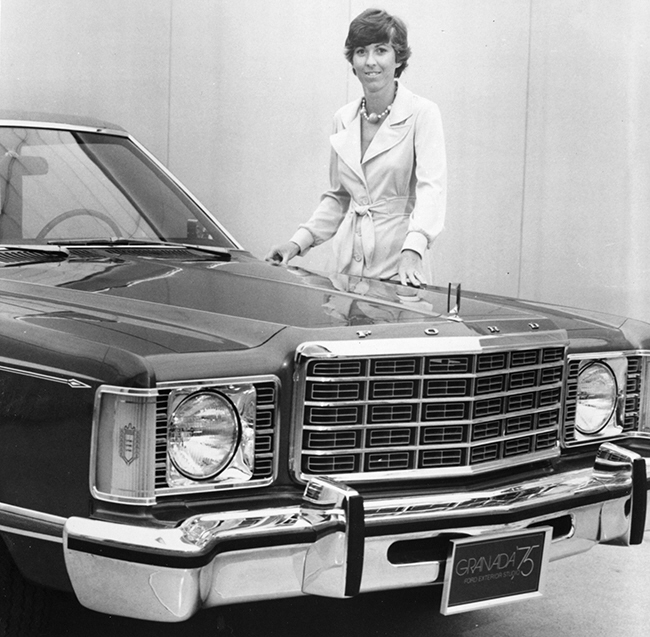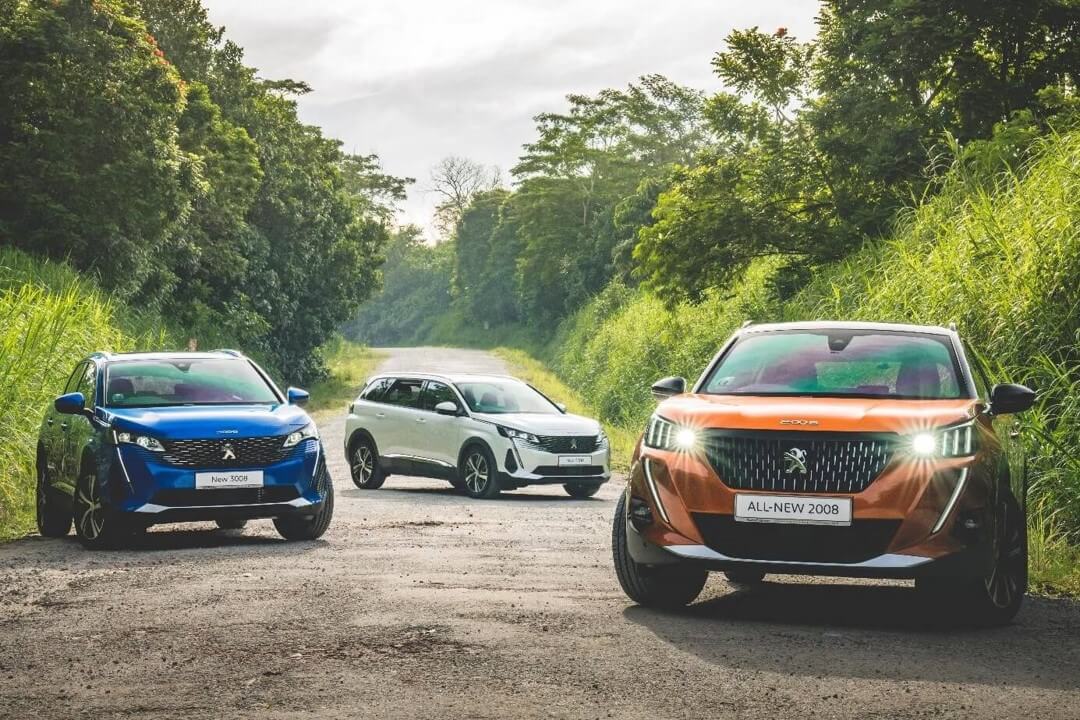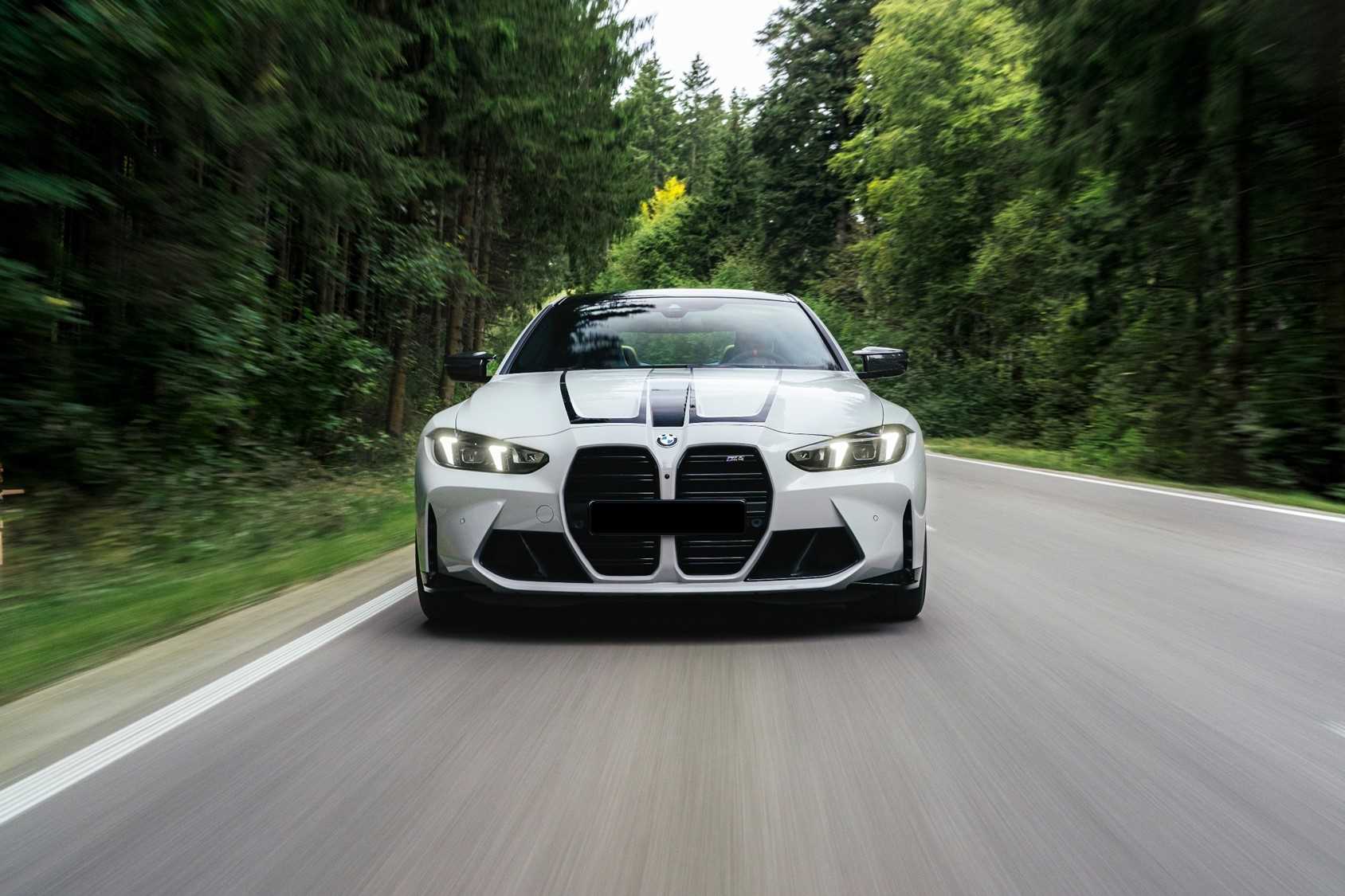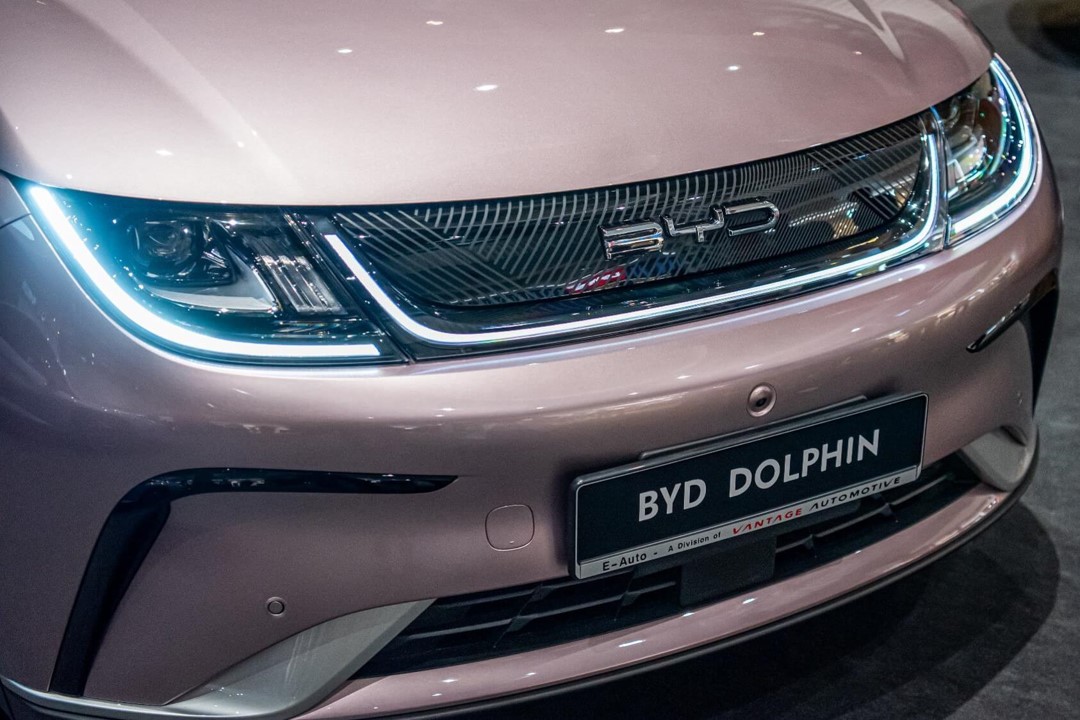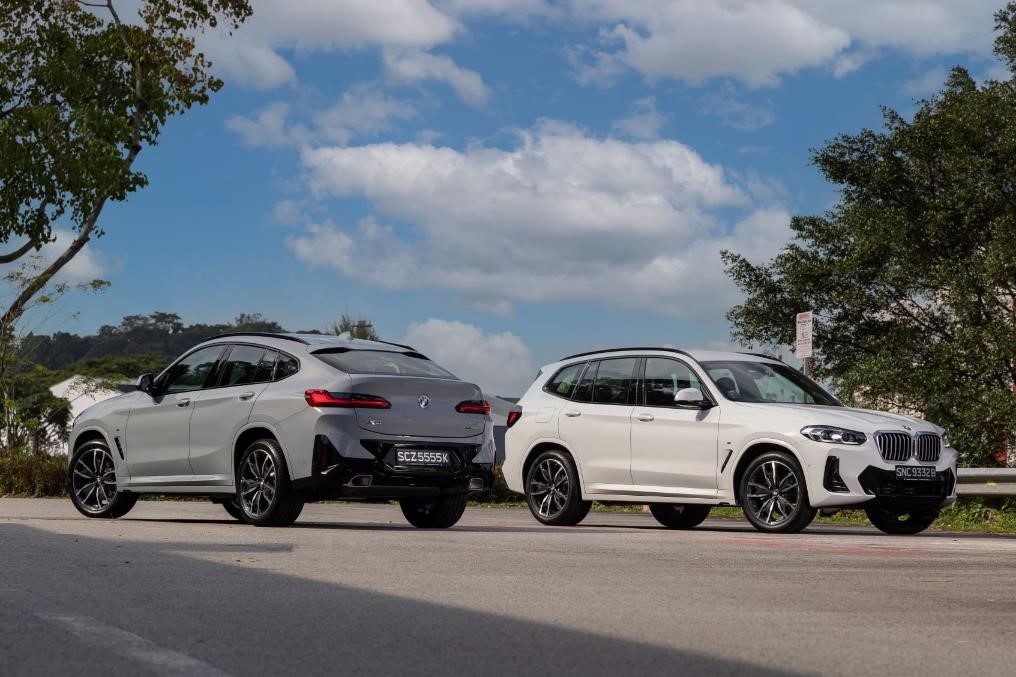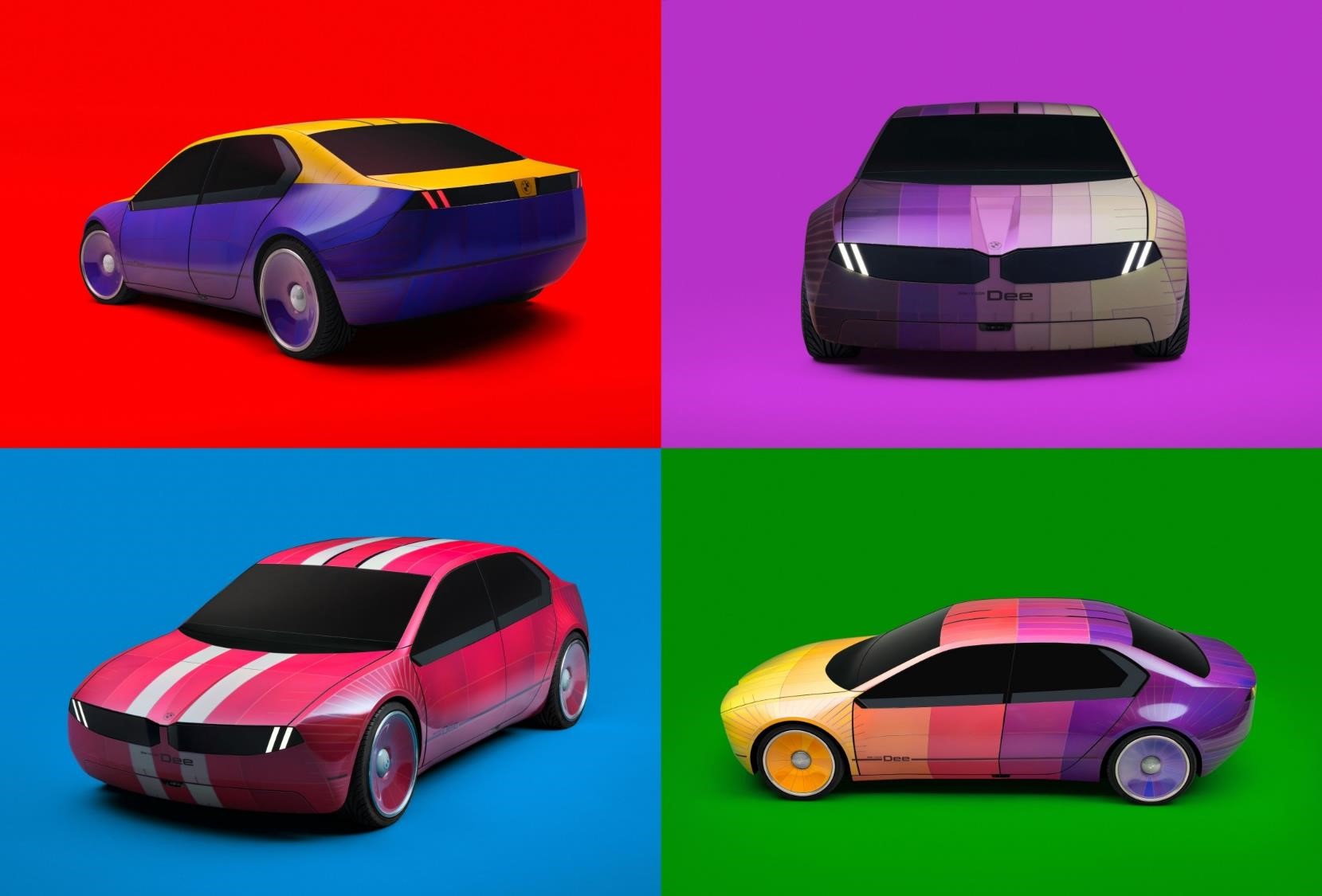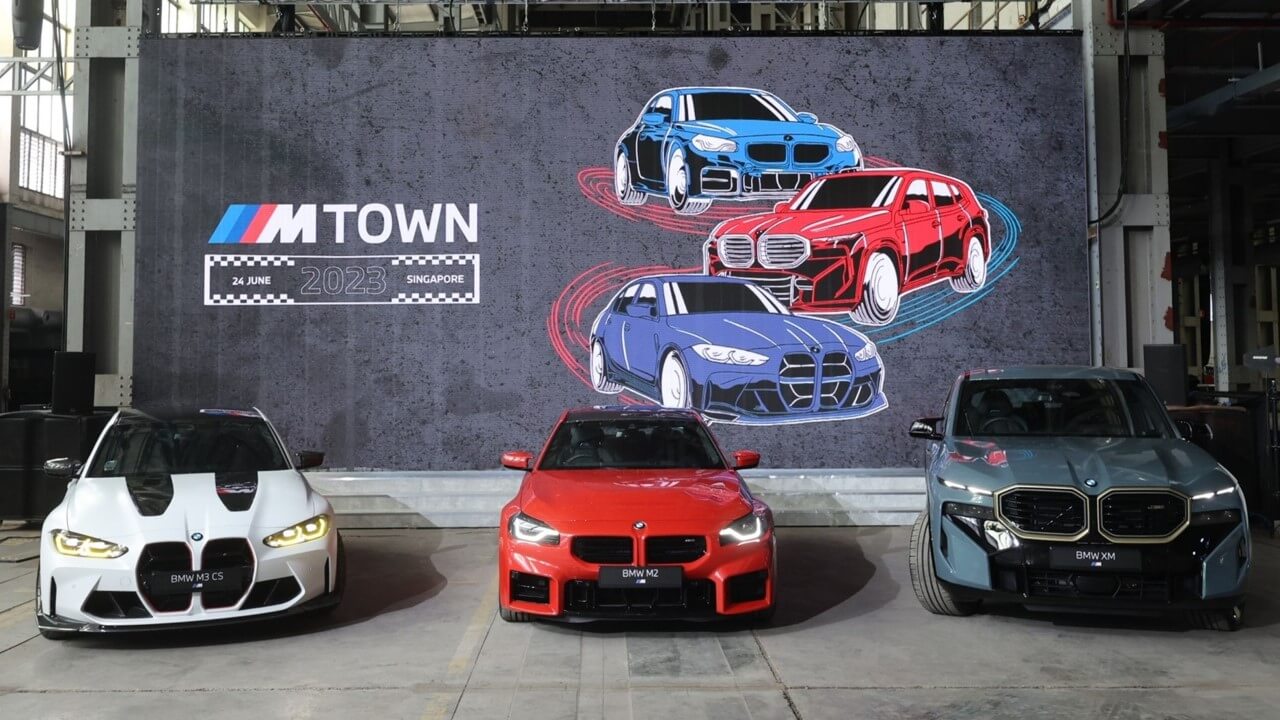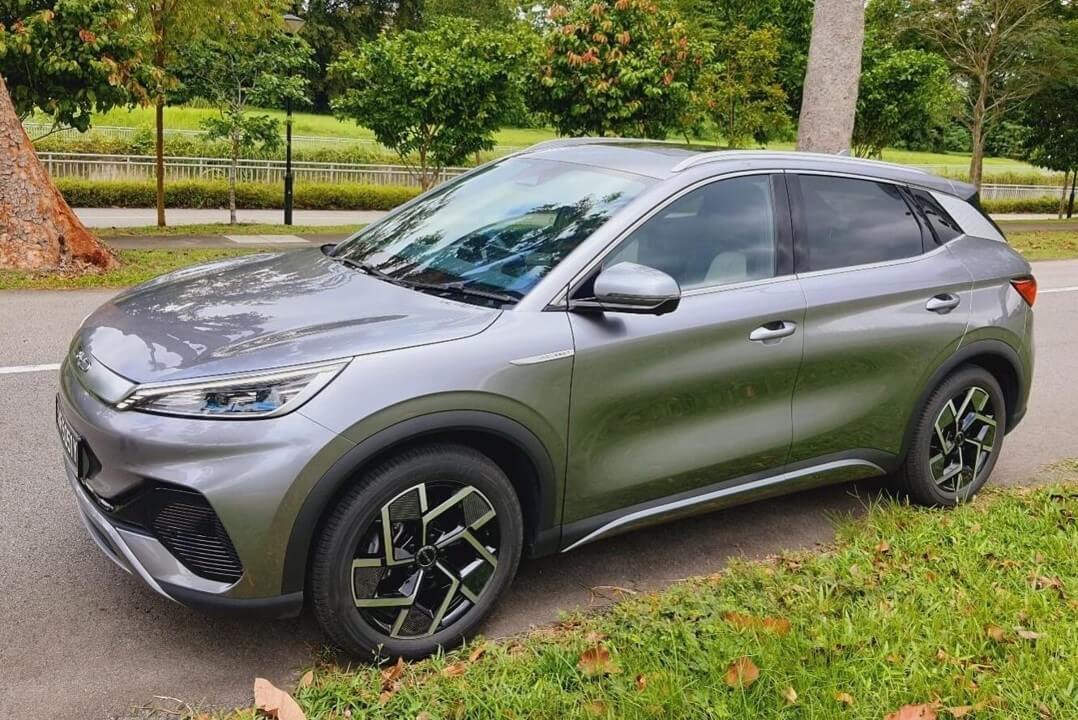It’s not a checkered past.
As Singapore turns another year older, we thought what better way to mark the occasion than by exploring the history of cars in Singapore. In doing so, we unearthed some lesser-known and interesting stories.
Whether you’re headed out to catch our National Day celebrations or staying home for some holiday R&R, save this article to read for later, as automobiles do play a significant part in our country’s past.
1. The first car arrived in Singapore in 1896
The first motorcar was brought into Singapore in 1896 by the Katz Brothers, shopkeepers who later started a wholesale and imports venture. They had imported the second-hand Benz for a customer, Charles Burton Buckley (yes Buckley Road was named after him) who was the owner of the Singapore Free Press back then.
Known as a ‘horseless carriage’, the car was a rattling open-air four-wheeler that had to be started by spooning petrol into the carburetor, heating it up with a match, and then manually cranking a flywheel at the rear.
Before that, the standard transportation mode for people was a horse-drawn carriage or the jinrickshaw (a Japanese version of the rickshaw or a bullock cart).
The Kaz Brothers soon became the sole agents for Benz and Cie’s “Motor Velocipede”, and the introduction of motorcars in the early 1900s soon changed how people moved around Singapore.
While the local Chinese saw the motorcars as strange inventions from the West, calling them “devil wind carriages”, they became popular among the well-to-do in Singapore. By 1907, car enthusiasts had set up the first Singapore Automobile Club.
Did you know: The first motorcar in Singapore carried the “somewhat high” price tag of $1,600. Needless to say, we won’t see such car prices in Singapore again.
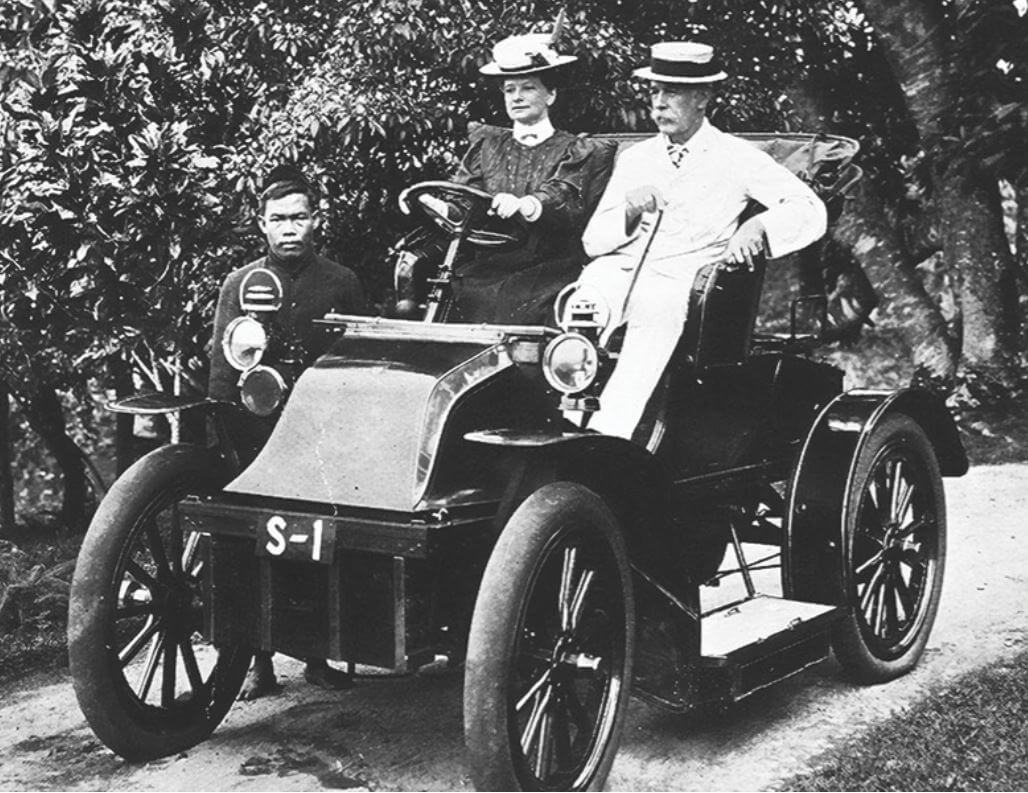
2. The first lady motorist was aptly named Mrs G.M. Dare
The first female motorist in Singapore was Mrs G.M Dare (above, photo source).
The government had began registration for private cars in Singapore in the early 1900s. Mrs Dare drove the first registered car, with the license plate number S-1, and nicknamed the automobile ‘Ichiban’ (Japanese for number one).
As befitting her name, Mrs Dare was an adventurous woman! She took her Ichiban not just all over Singapore, Malaya and Java, but even England and Scotland, clocked about 111,000 km in total!
Apparently, the intrepid lady also taught a Hassan bin Mohamed how to drive and he became the first Malay to obtain a driving licence in Singapore.
Did you know: Mrs Dare passed away in 1927 and was laid to rest at Bidadari Cemetery.
3. Singapore used to produce cars
American car brand Ford, which introduced the popular Model T automobile in 1908, used to operate in Singapore. Initially, it incorporated a company called Ford Malaya, which started a plant in Singapore in 1926, focusing on wheel-fitting and touching up of vehicles.
As demand for Ford cars increased, partly because World War II disrupted the supply of British and European cars, their Singapore operations was converted to an entire assembly plant in Bukit Timah.
Completed in 1941, this Ford factory (photo below) was the first and only automotive assembly plant in Southeast Asia.
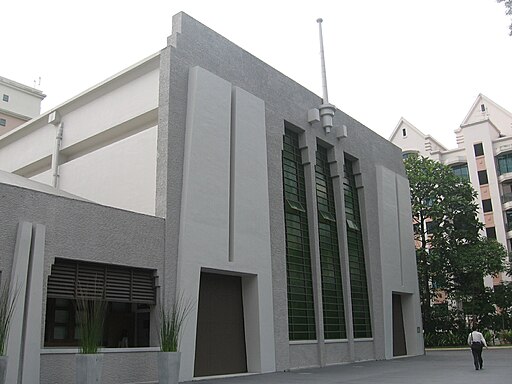
Unfortunately, a year later in 1942, it became the site of the British surrender of Singapore to the Japanese in World War II.
After the war, the Ford Factory was returned to the company in 1947. It resumed the production and assembly of Ford motorcars until 1980, when the firm exited Singapore.
Today, the former Ford Factory is a historical monument. It is worth a visit this National Day given its strong ties to Singapore’s road to independence!
Did you know: In the 1960s, Ford marketed its Consul Cortina as a young and modern woman’s “dream car”, reflecting the rising status of women in Singapore.
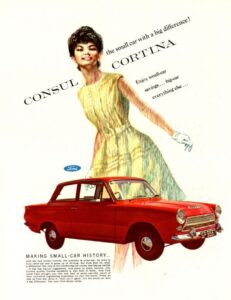
(Source)
4. Car showrooms used to dot Orchard Road
It’s hard to imagine, but Orchard Road used to be where many automotive brands and workshops in Singapore were located. This was because the surge in demand for motorcars in the 1920s coincided with the rise of Orchard Road as an up-and-coming residential area.
From Fiat to Ford – many car brands can be found in old Orchard Road (source)
If you walk past the row of conserved buildings opposite Dhoby Ghaut MRT station, you might notice a building that has a gable end with a scalloped roof (below, photo source).
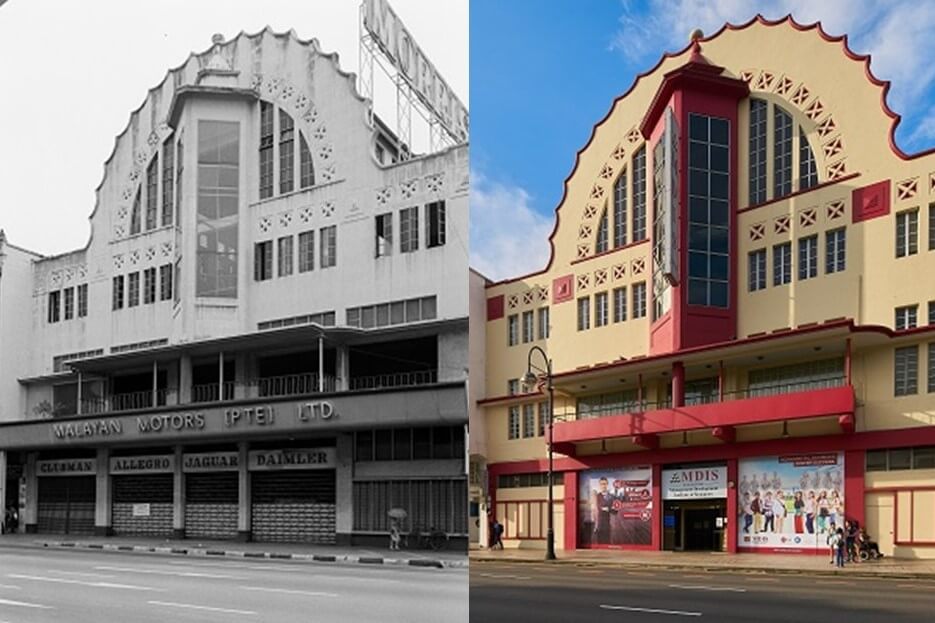
Completed in 1927, the building was a showroom and office building for Malayan Motors. It saw its last sale in August 1980.
Another prominent car showroom back in the day was Champion Motors, where Lucky Plaza now stands. Nearby, at the corner of Orchard Road and Bideford Road, stood the old showroom of Orchard Motors.
However, in the early 1970s, many new and used car agents and repair workshops started moving to the Middle Road area since the erstwhile Registry of Vehicle was located there.
Today, if you are shopping for cars in Singapore, you’ll head to Alexandra and Leng Kee, which has become the new “automotive belt” of Singapore since 2010.
Did you know: The oldest registered automobile in Singapore is this 1918 Maxwell Model 25 (photo source). So stunning, even though it’s over a century old!
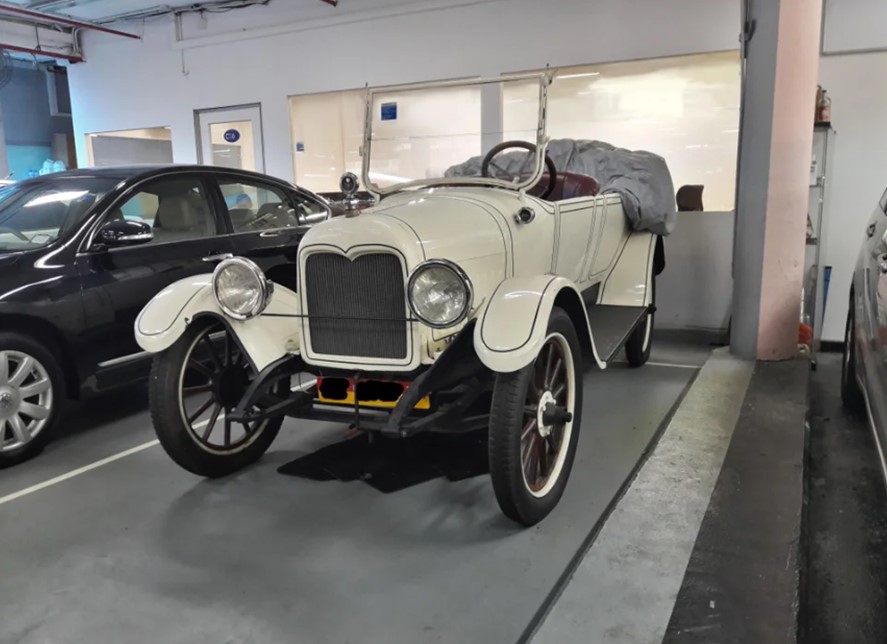
5. Before Formula 1 Singapore Grand Prix, there were other GPs in Singapore
If you thought that the Formula 1 Singapore Grand Prix is the first major motor race in the country, well, you’re in for a surprise.
In 1948, the Singapore Motor Club was formed by some local motor sports enthusiasts. They used to organise races at South Buona Vista, Lim Chu Kang and Farrer Road.
Their efforts culminated in the Orient Year Grand Prix in September 1961. It was sponsored by the Ministry of Culture back then as a way to promote Singapore’s tourism sector.
The two-day weekend event saw amateur and experienced motorcyclists and drivers taking part. However, the main highlight was the Sunday competitive races – one for motorcycles and one for motor cars.
The 30 qualified competing drivers had to complete 60 laps of the 4.8km Thomson Road Circuit (some called it the Sembawang Circuit). They were sorely tested by the many challenging bends, including the dangerous Devil’s Bend, which was shaped like the letter V.
The event was a runaway success, attracting a record number of tourists and revenue to the country. It continued to be in the international limelight for over a decade. It was briefly renamed as the Malaysian Grand Prix between 1962 and 1965, when Singapore joined the Federation of Malaysia. Post-independence, it resumed the Singapore Grand Prix name in 1966 (below, photo source).
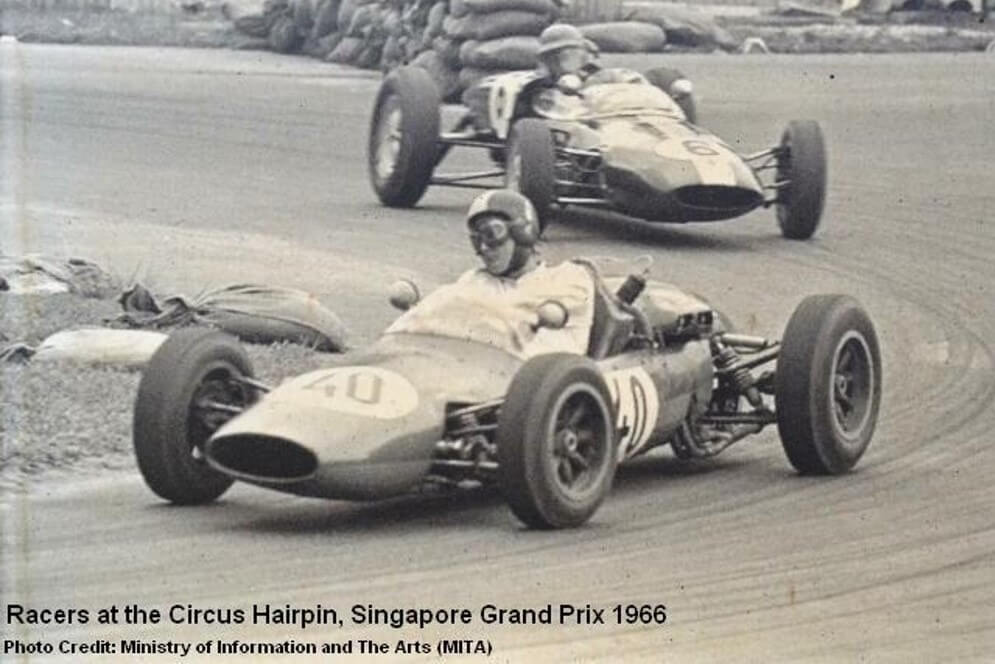
Alas, the Singapore Grand Prix ended in 1973 after the authorities cited safety as one of the reasons for putting a stop to the event.
The words, Singapore Grand Prix, would not make an appearance until more than 30 years later. In 2008, the first Formula 1 SingTel Singapore Grand Prix was held on the new Marina Bay Street Circuit, throwing the spotlight on the world’s very first night race in Formula One history.
Did you know: The first Singapore Grand Prix in 1961 had a female competitor in Anne Wong Holloway. Although the then 21-year old Singaporean driver did not complete that race, she would eventually go on to win the Macau Grand Prix in 1970.
A drive down memory lane
So there you have it – some really fascinating finds about the history of cars in Singapore. While these stories may not necessarily set your pulse racing, they have won an important place in any historical document charting Singapore’s past and growth into a modern city.
Happy National Day!
(Updated 9 Aug 2023)
References:
- Biblioasia, National Library Board – “Wheels of Change: 1896–1970”; “Mrs Dare and Her Magnificent Driving Machine”
- “Singapore’s first motorcar was a problem”
- “Famous ‘firsts’ of days gone by in S’pore”
- Roots, National Heritage Board – “A motorcar with a Malay driver“, “Motor Vehicle Licence”; “Former Ford Factory”, “SMA House”
- Singapore Infopedia – “Ford Motor Company of Malaya (Ford Malaya)”, “First Singapore Grand Prix”
- The Long and Winding Road – “An enlightened space”, “Motoring Days on Orchard Road”
- Singapore Vehicle Traders Association
- Remember Singapore – “Vroom Vroom … Looking Back at the Old Singapore Grand Prix”
- Wikipedia – “Thomson Road Gran Prix circuit”; “Singapore Grand Prix”
- Singapore Book of Records – Transport
- “More than an old car #48: Maxwell Model 25”



